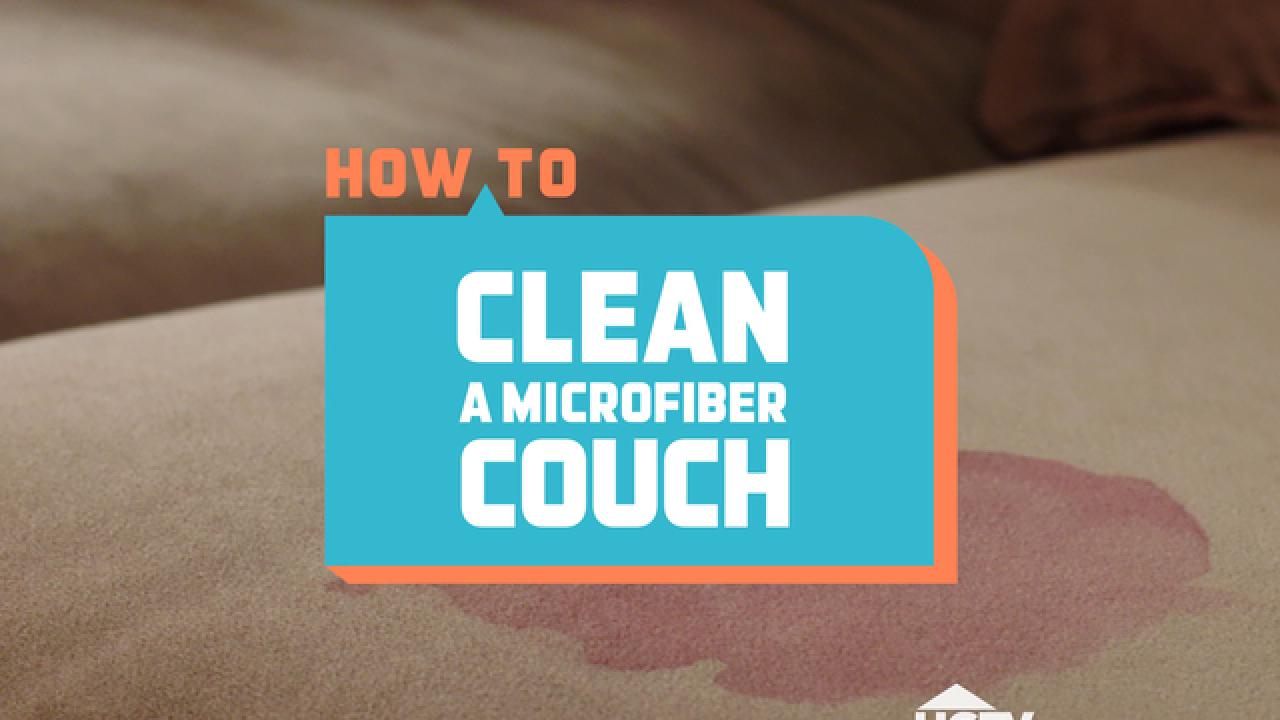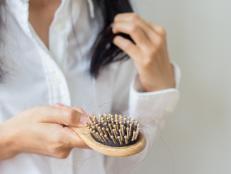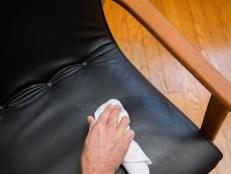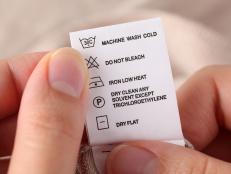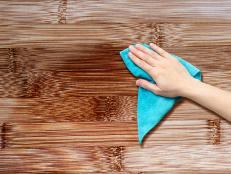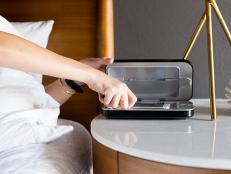How to Clean a Microfiber Couch
Learn how to spot clean and deep clean surface stains on microfiber upholstery.

Stain resistance is among the many reasons people choose microfiber upholstery for their homes. Households with pets and children are especially prone to leaving their mark on sofas, but like most materials, anyone can contribute to upholstery staining without even trying. Hair products, skin oils, dirt and dust are always accumulating on the high-touch areas on couches and sofas such as headrests, arm rests and ottomans. Learning how to keep your furniture clean is paramount to the cleanliness of your home.

Getty Images/CreativaStudio
Stains from oils, skin and hair care products, dirt and dust can affect microfiber upholstery.
Microfiber is synthetic, making it less likely to hold a stain the same way as cotton. Its notably tightly woven fibers reduce the likelihood of deep-set stains and allow cleaners to work effectively to lift stains from the surface.
As durable and easy to maintain as microfiber fabrics are marketed to consumers, it’s important to note that spot cleaning and deep cleaning processes differ.
- Spot cleaning to eliminate a stain is targeted toward the stain and aims to protect against water rings that can linger on microfiber
- Deep cleaning to remove dirt and oils is best if you’re treating the entire sofa, leaving little evidence of discoloration in a single spot
- Always start by checking your couch manufacturer’s recommendations
How to Deep Clean Your Microfiber Couch
You'll need:
- vacuum with upholstery attachment
- two bowls or small buckets
- liquid dish soap
- water
- whisk or other mixing tool
- soft brush
- microfiber cloth
- baking soda (optional)

Emily Fazio
You'll clean your microfiber couch using a frothy bath made from 1/2 cup liquid dish soap and 2 cups of warm water. Whisk liquid soap into a foamy lather and apply it to the sofa using a soft-bristled brush.
- Vacuum your couch. It’s always important to eliminate and remove as much surface and crevice buildup before applying moisture to the microfiber. Use the upholstery attachment on your vacuum to loosen and remove dust, crumbs and hairs.
- Mix water and dish soap. Create a frothy bath using 1/2 cup liquid dish soap and 2 cups of warm water. Depending on the size of your sofa, scale your volume up or down so you have enough liquid to deep clean the entire visible surface. Fill the second container with plain water so that you have a clean water source.
- Apply the suds to lift oils and dirt. The sudsy, soapy bubbles that form on top of the mixture are used first to treat the fabric. Use a soft-bristled brush to apply the suds directly to the fabric and massage them in a circular motion into the material. Work in small areas, or cushion by cushion.
- Rinse and repeat. When you need to get more suds on your brush, first stop to rinse your brush in clean water to eliminate any dirt that collected on the bristles. It's okay to submerge the brush in a bucket of clean water but try to eliminate the water moisture before you dip it back into the suds. You don’t want to oversaturate the microfiber at any point in the cleaning process.
- Wipe down the couch with a damp microfiber cloth. Use a clean microfiber cloth dampened with fresh water to wipe down each cushion and lift away the remaining dirt and oils. Wiping consistently across the entire surface will help reduce the likelihood of water rings and water stains caused by targeted oversaturation.
- Let the couch dry. Let all the cushions air dry. If you disassembled loose cushions while cleaning, let them dry completely before putting the couch back together.
- Vacuum the couch again. Running the upholstery attachment on the vacuum across the clean fibers will help restore them to their original texture.
Lingering odors? After the sofa has completely dried, dust the sofa with a light layer of baking soda to absorb smells. Use a soft brush to distribute the powder into the crevices. Let it sit for 4-6 hours (or overnight). Then, thoroughly remove the baking soda with the vacuum and upholstery attachment.
How to Spot Clean Your Microfiber Couch
You'll need:
- vacuum with upholstery attachment
- spray bottle
- soft brush
- enzymatic upholstery or carpet cleaner
- 70% isopropyl alcohol (rubbing alcohol)
- white cotton cloth or clean rag

Getty Images/Marko Klaric / EyeEm
Always vacuum a microfiber sofa before applying cleaners.
- Vacuum the couch. Lift and remove dust, crumbs and hairs from the area you’re cleaning using the upholstery attachment on your vacuum.
- Choose your cleaner. Pick your cleaner of choice and test it in an inconspicuous area on the fabric. Enzymatic, oxygenated cleaners are amazing at lifting a wide range of stains from upholstery, but rubbing alcohol from your bathroom cabinet works great, too. If you’re using rubbing alcohol, transfer a small amount into a spray bottle so that it can be easily applied.
- Spray the stain. Mist the couch with the cleaner, targeting the stain. The cleaner will immediately begin to lift the stain and isolate it from the surrounding fibers.
- Capture the stain with a cloth. Use the cotton cloth or rag to dab and gently rub at the stain. Avoid deep agitation. Let the cloth and cleaner work together to clean the material. It may be hard to know if you captured the whole stain on the first try. Depending on the type of stain, you may want to treat it a second time. Use a new, clean cloth so you can easily see if you’re picking up more of the stain when you dab at it.
- Let the treated spot air dry. Once it dries, you’ll know for sure whether or not the stain was completely removed. If not, you can apply cleaner and treat the area again.
- Vacuum the couch again. If the fibers on your sofa need to be "revived” after spot cleaning, use the upholstery attachment on the vacuum to restore the entire couch to its original texture.
